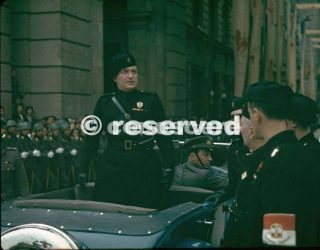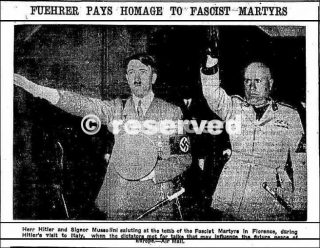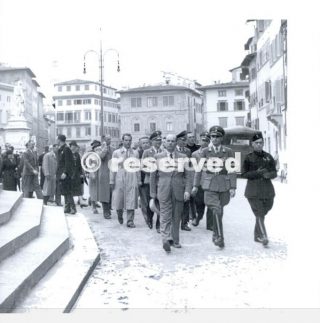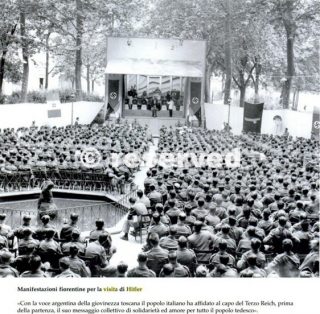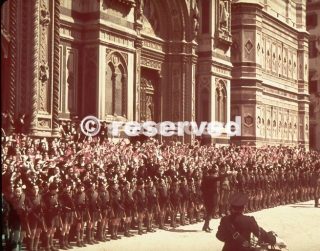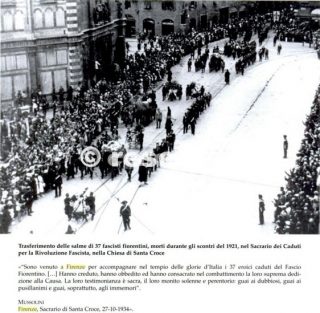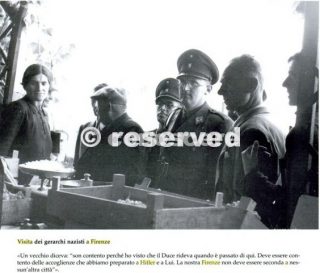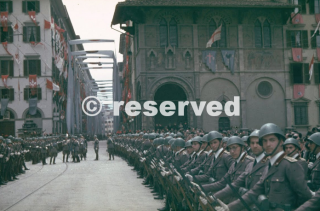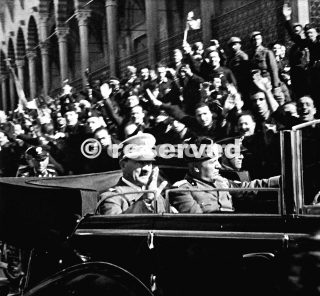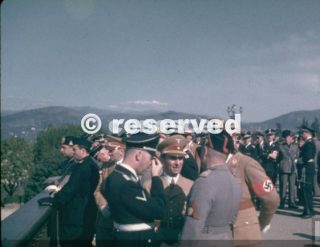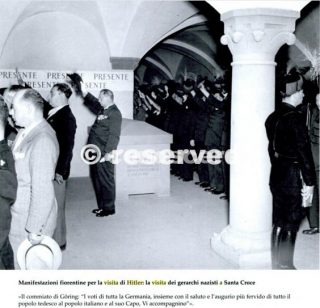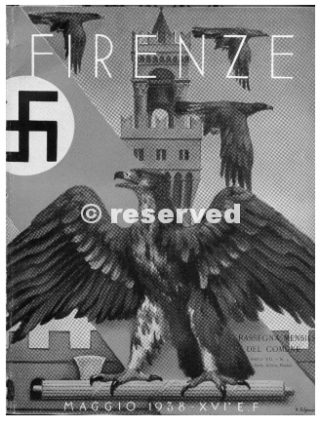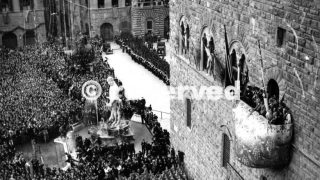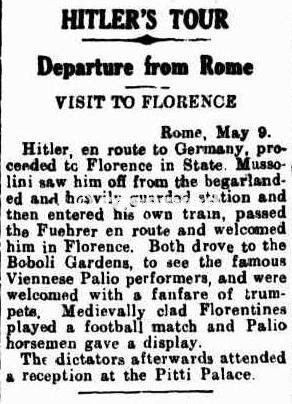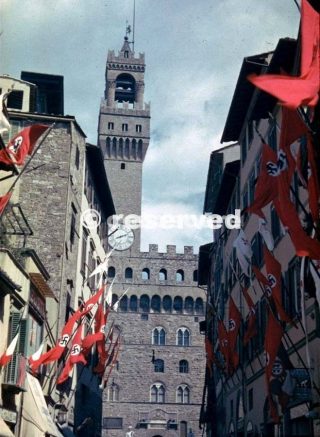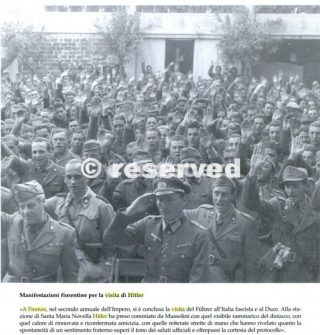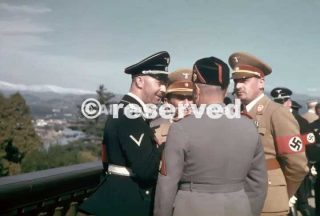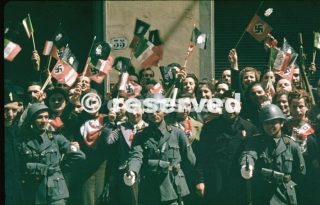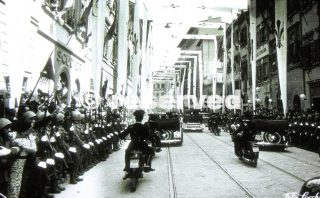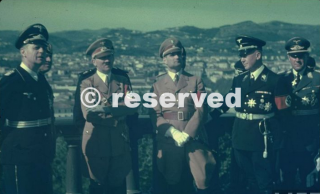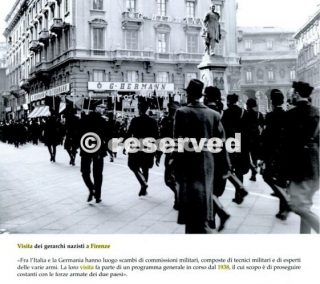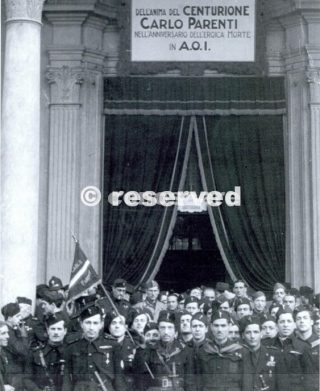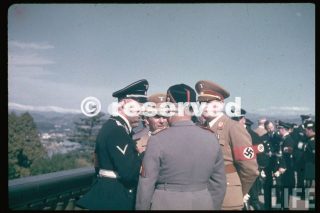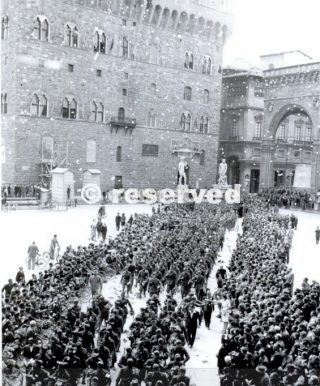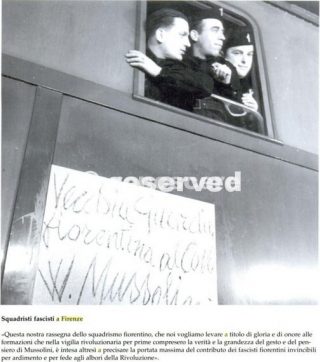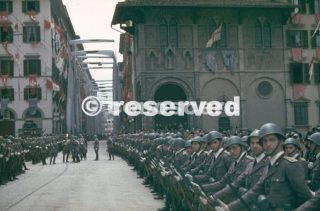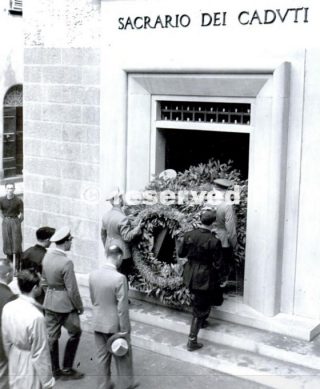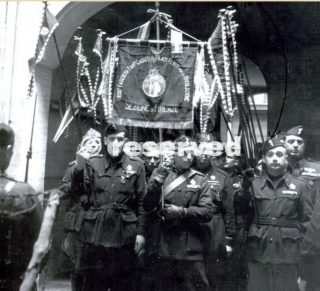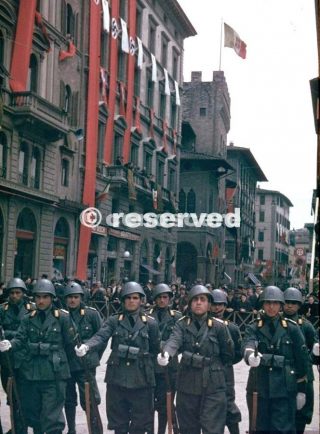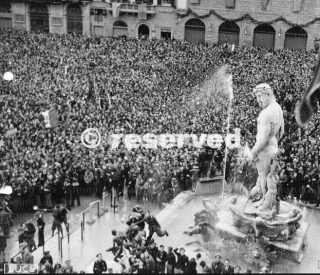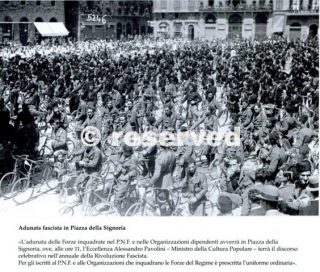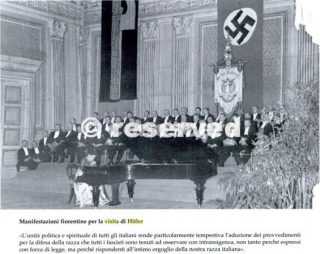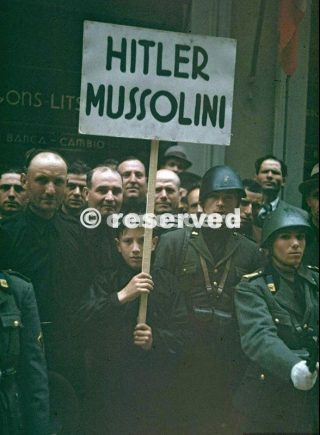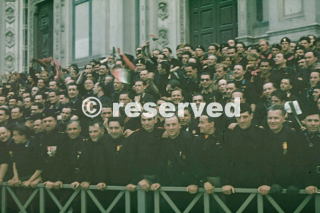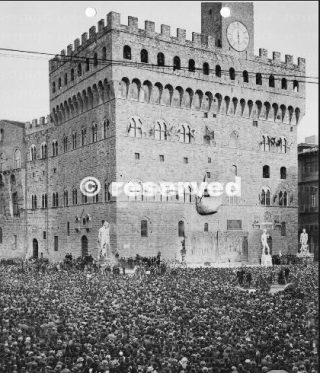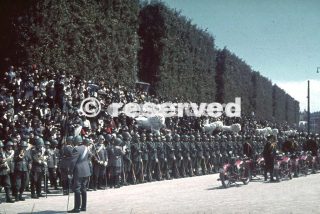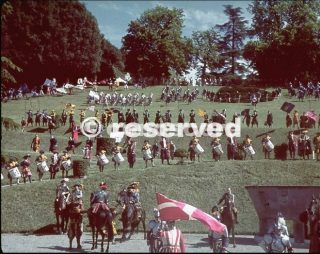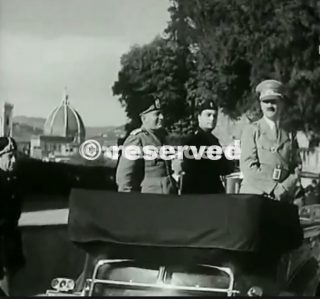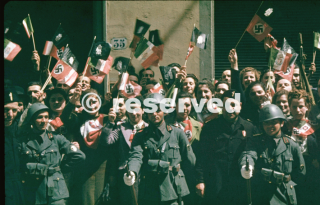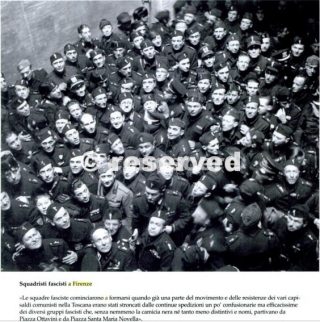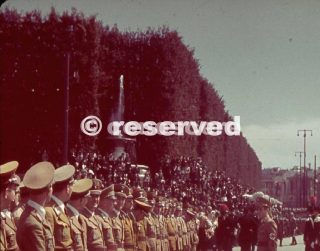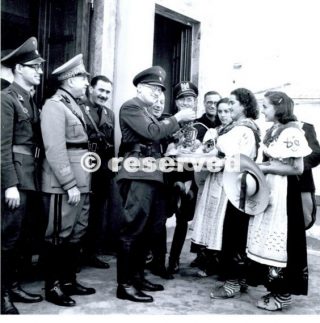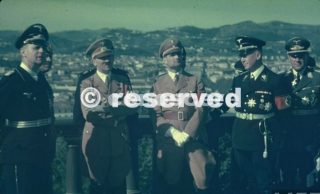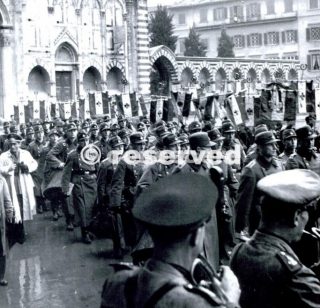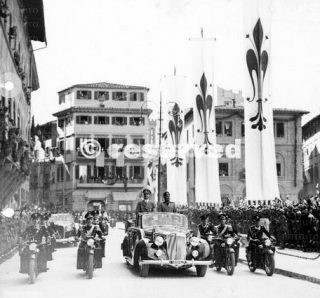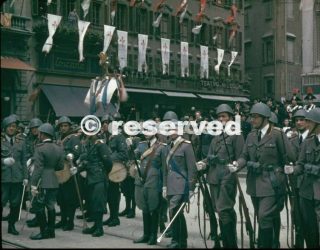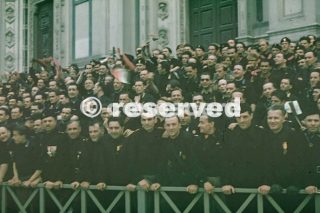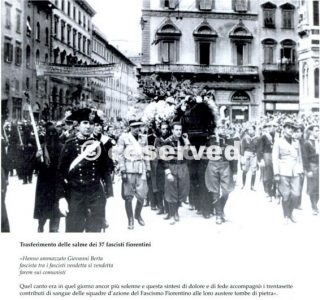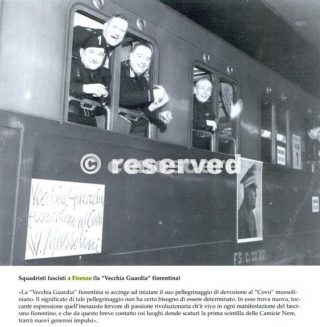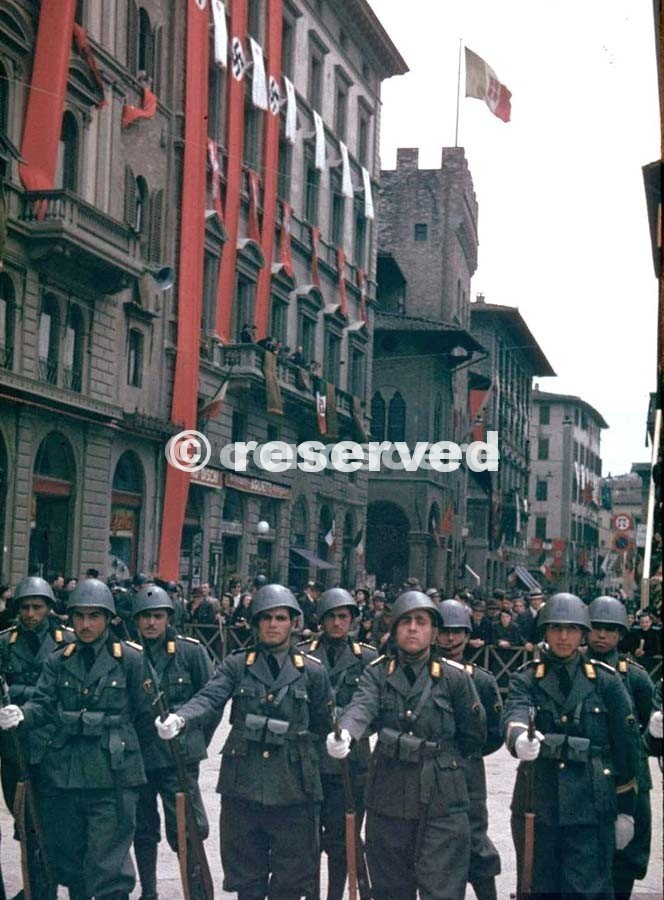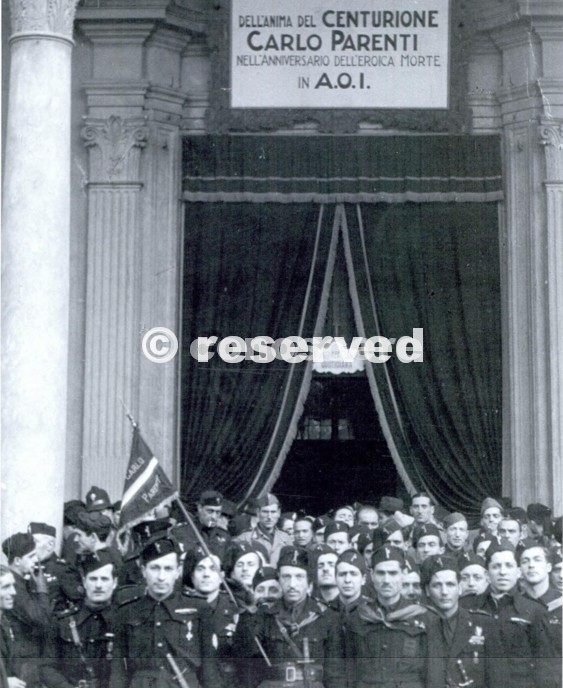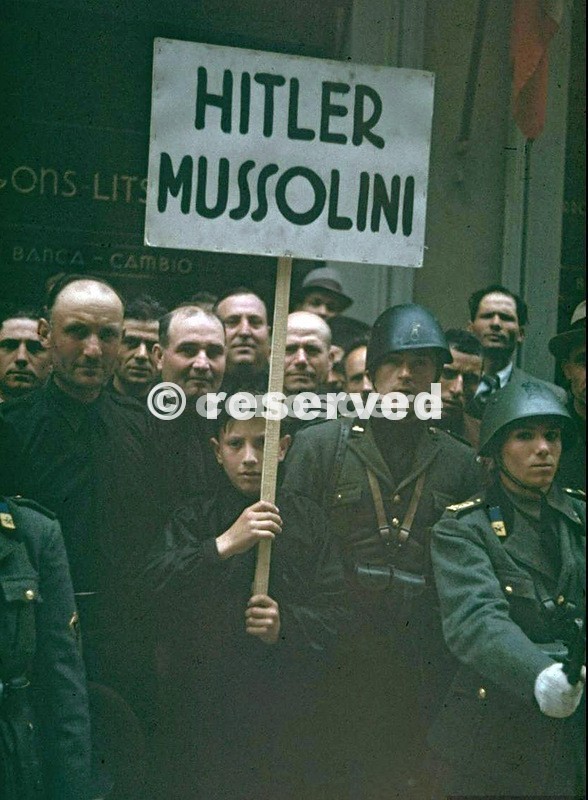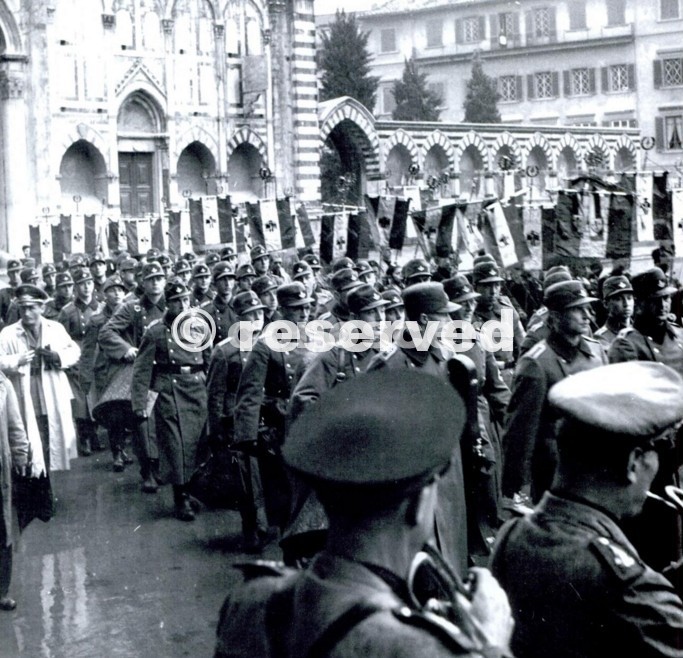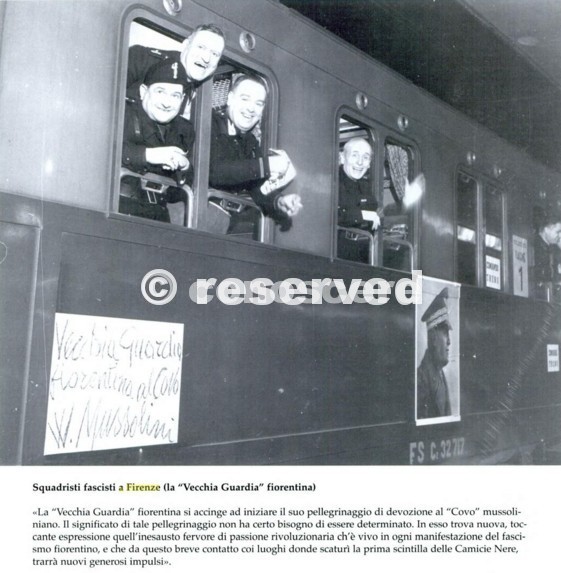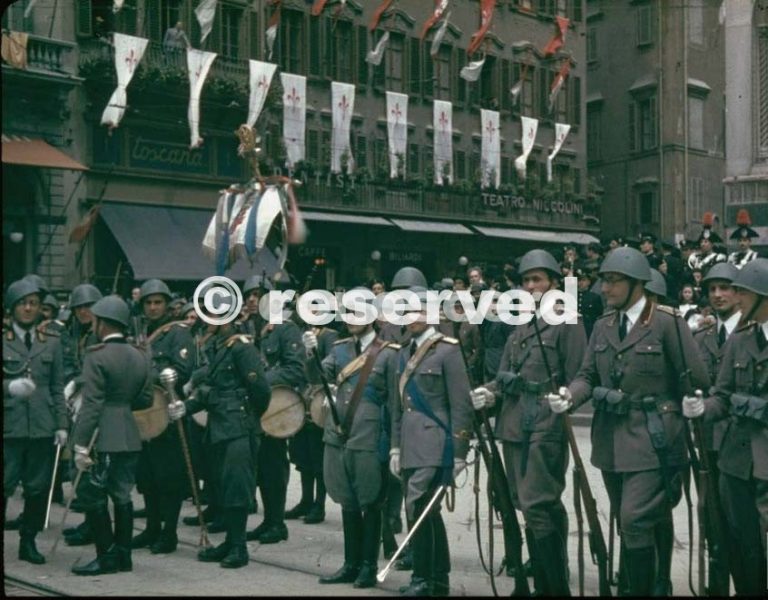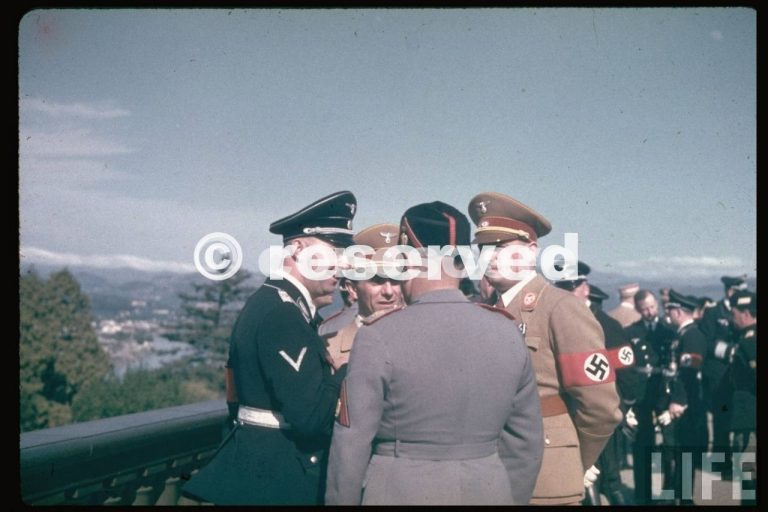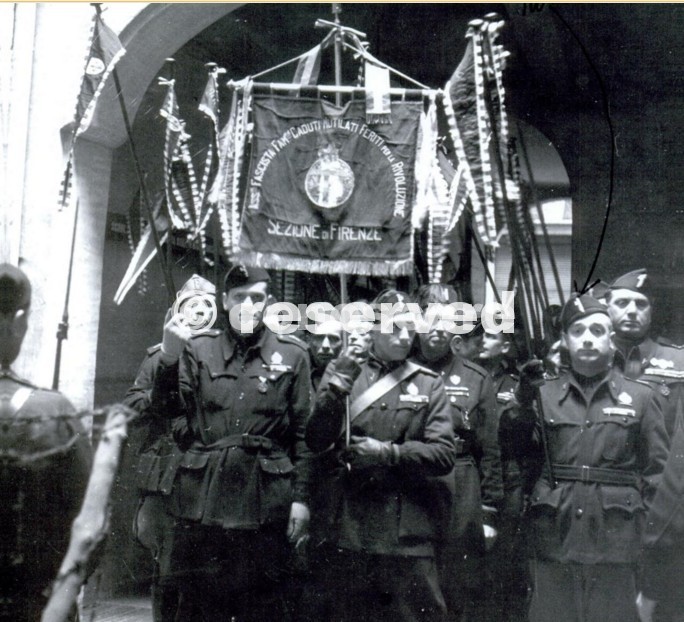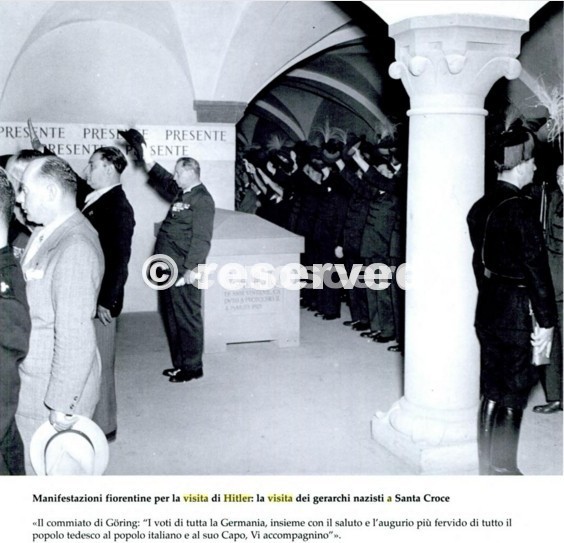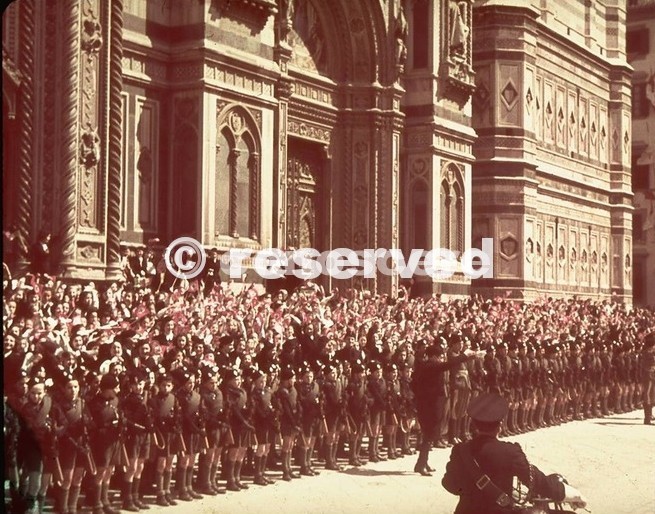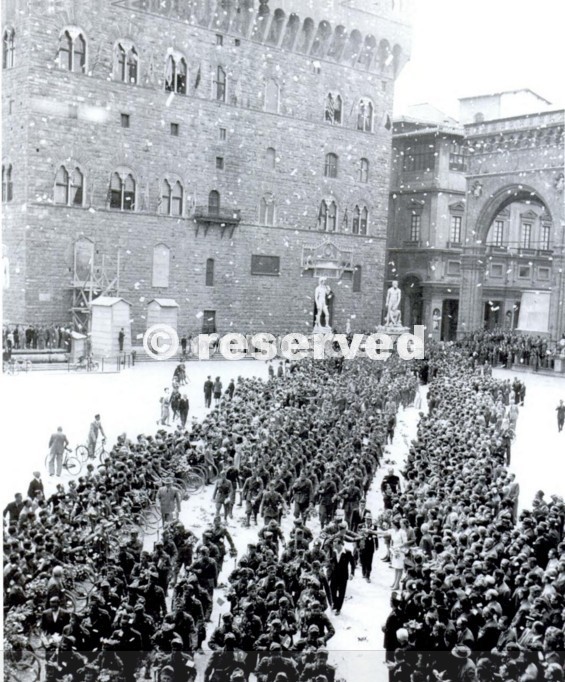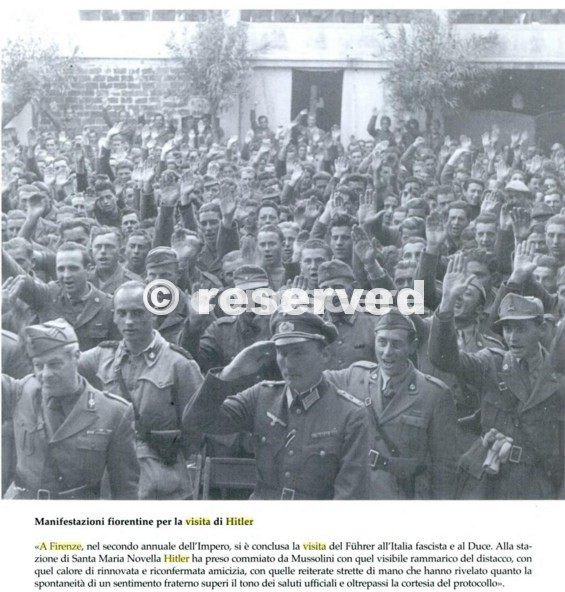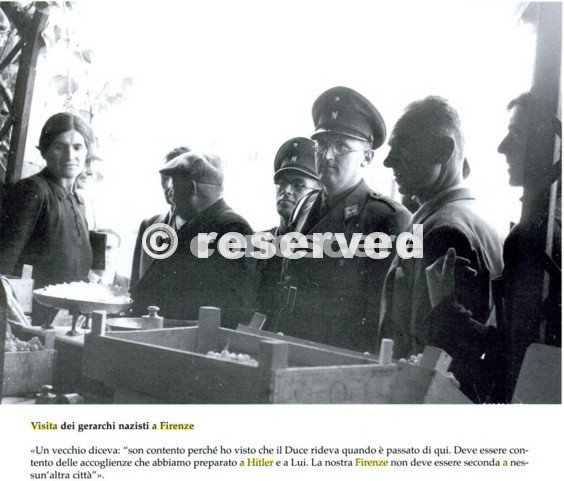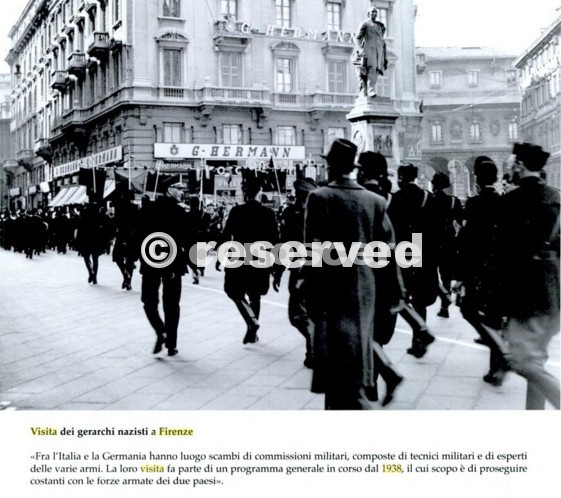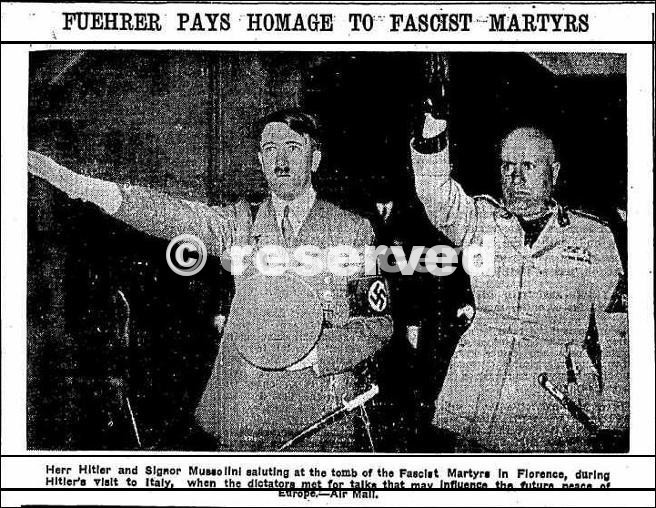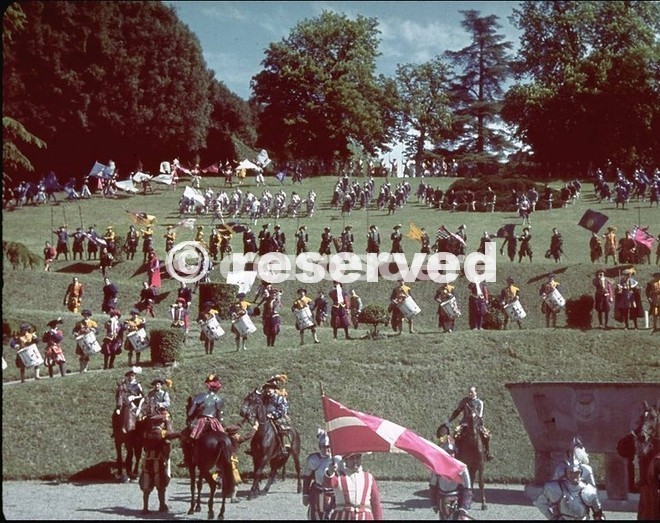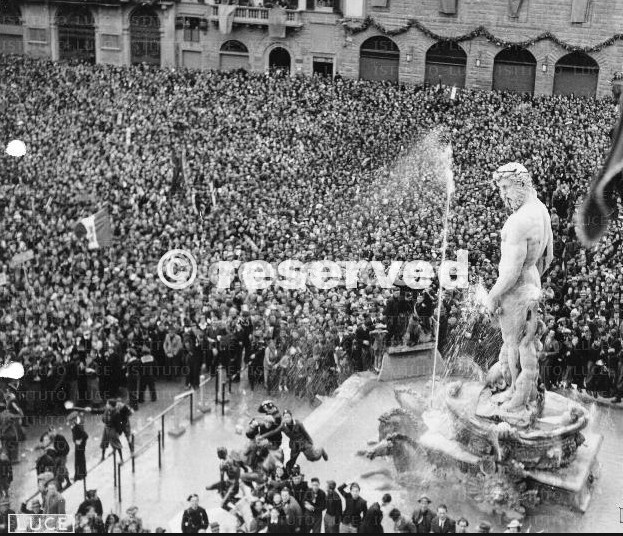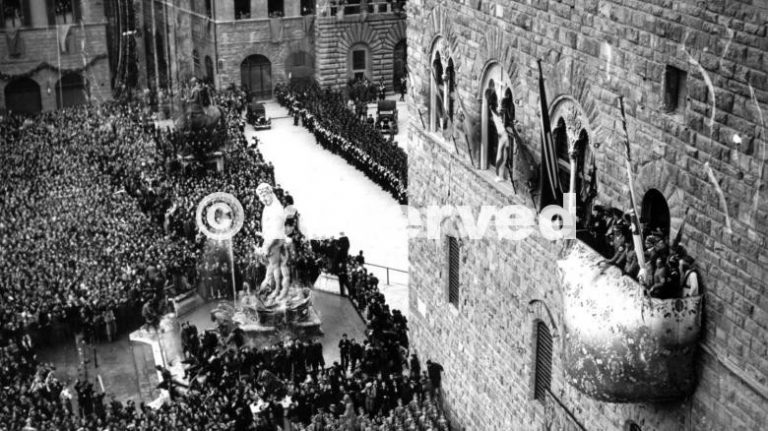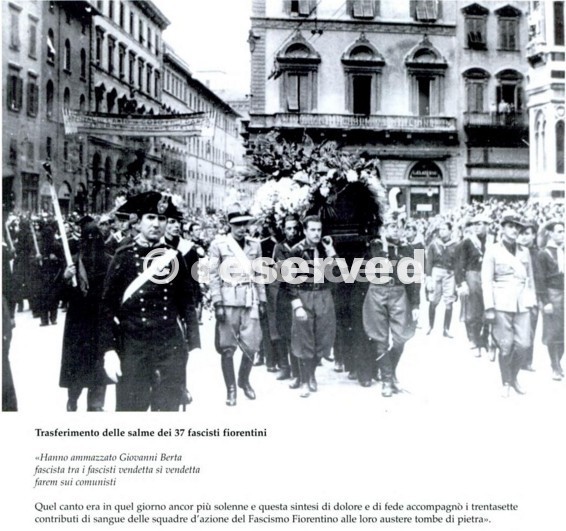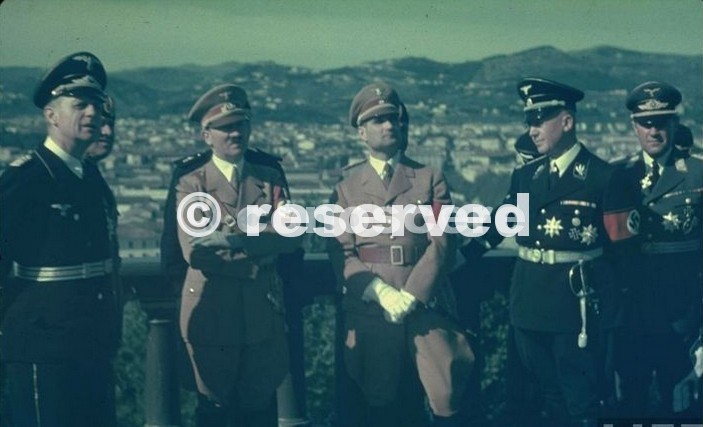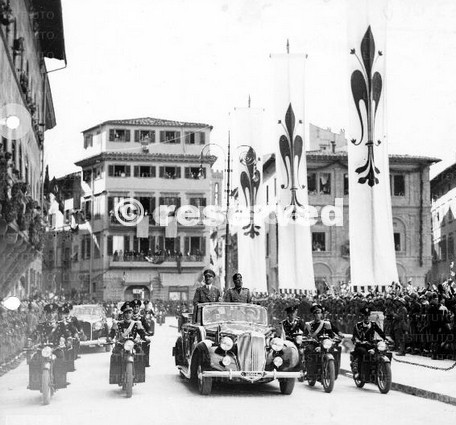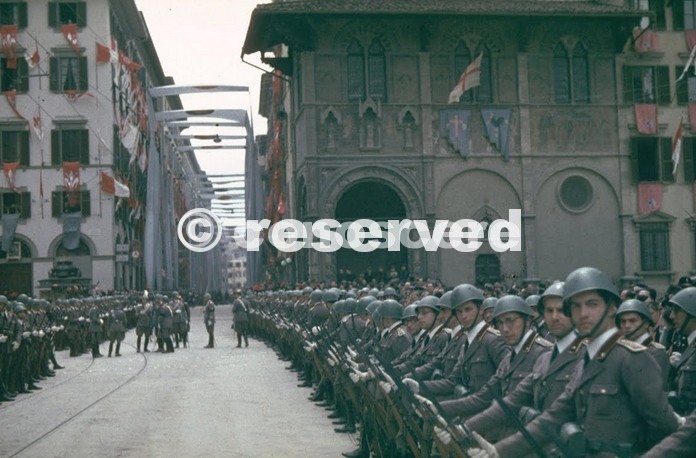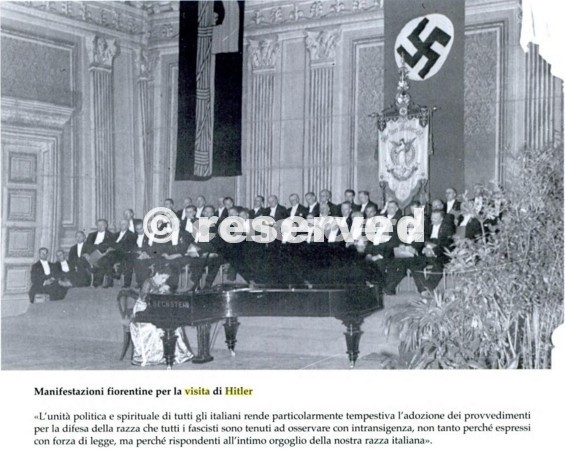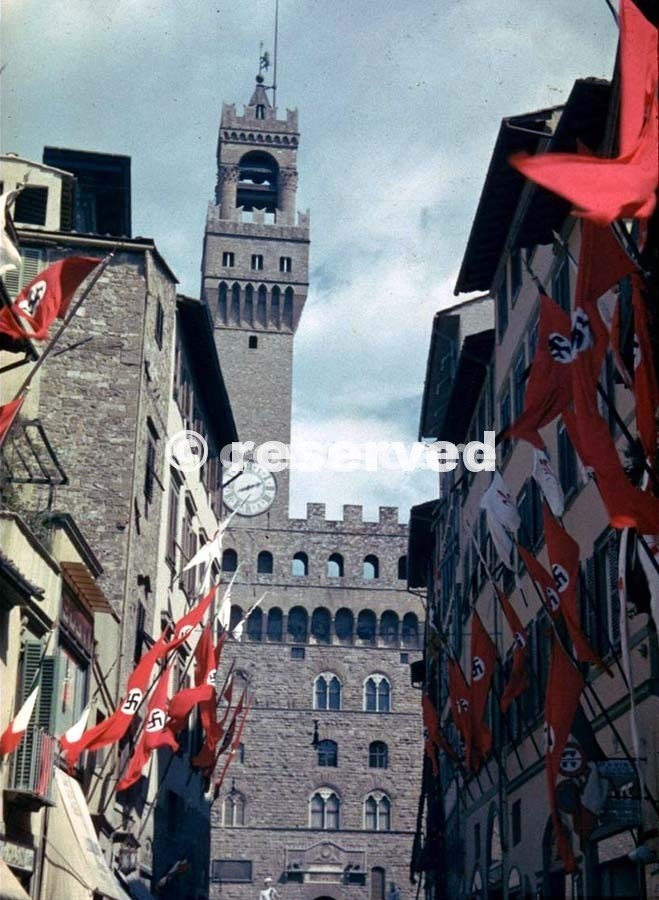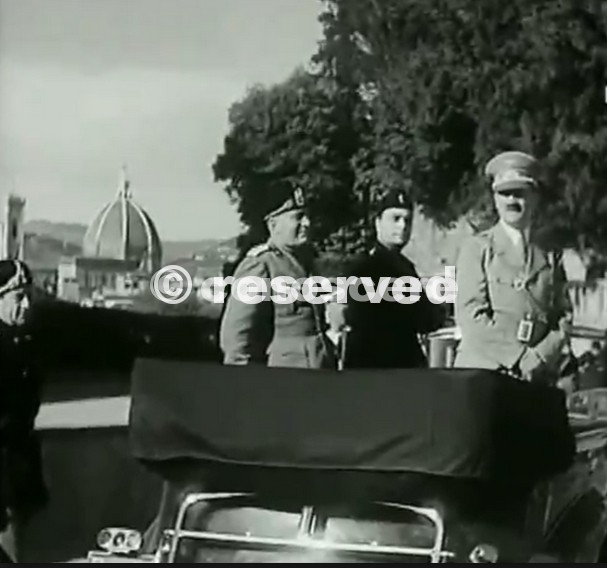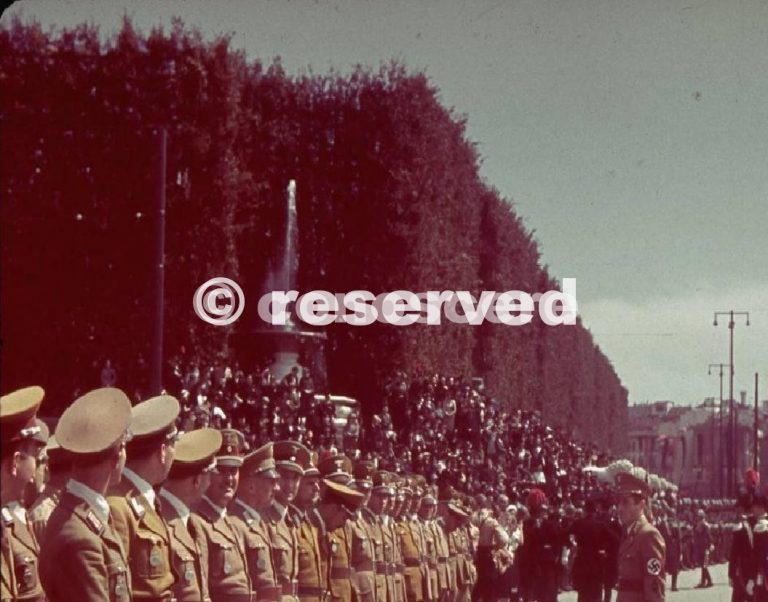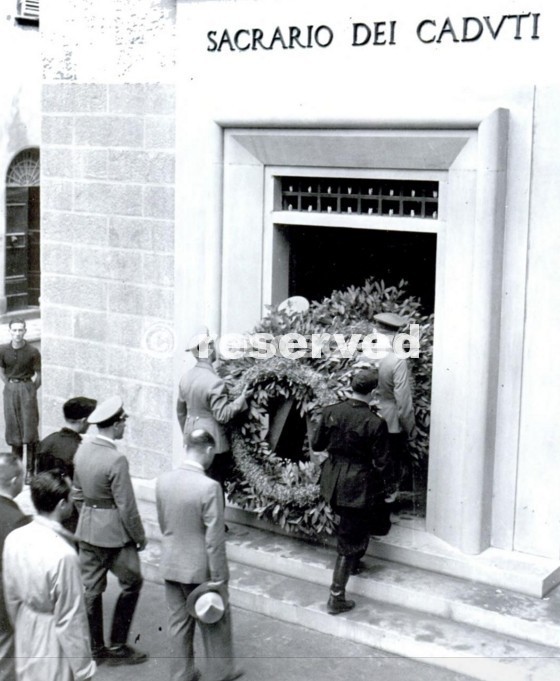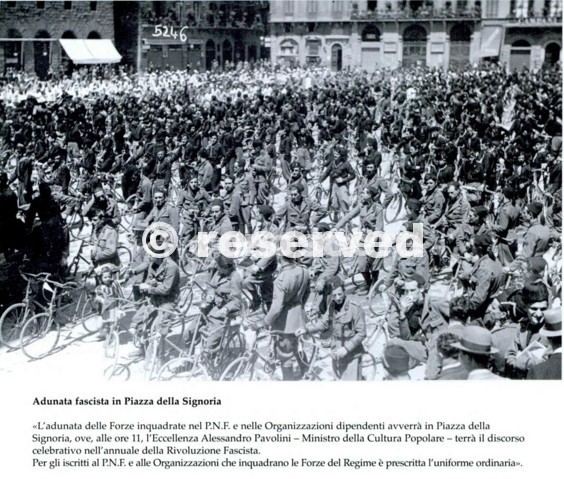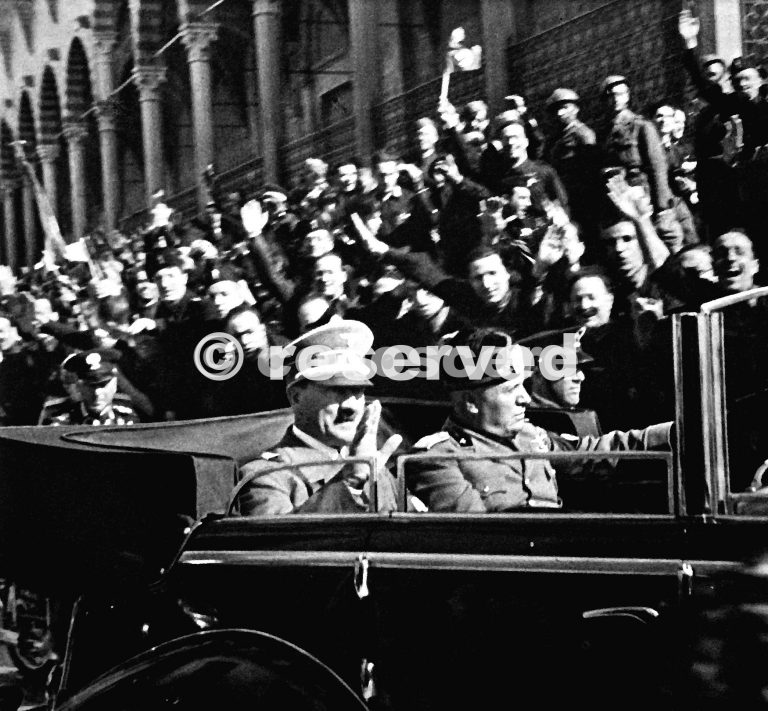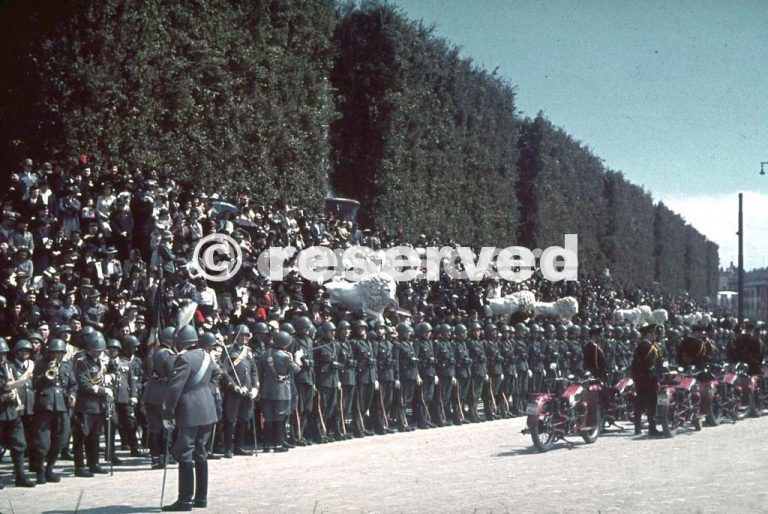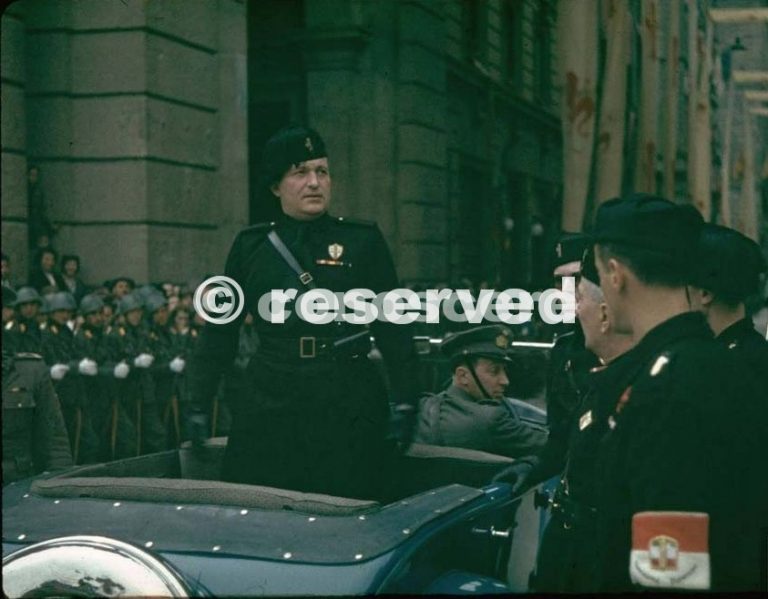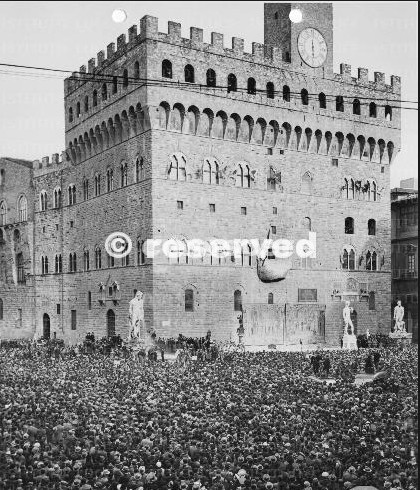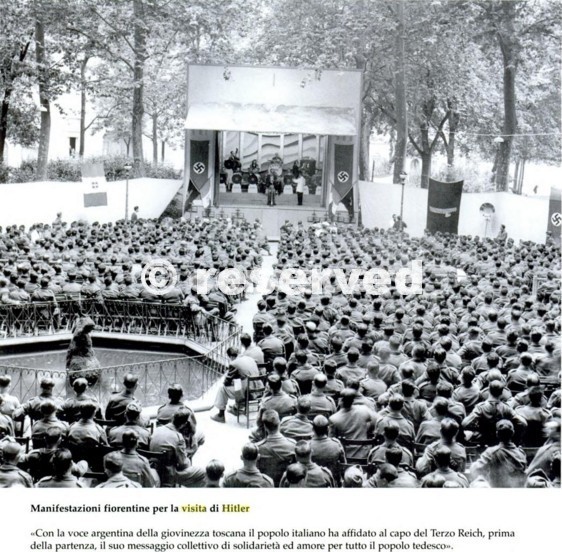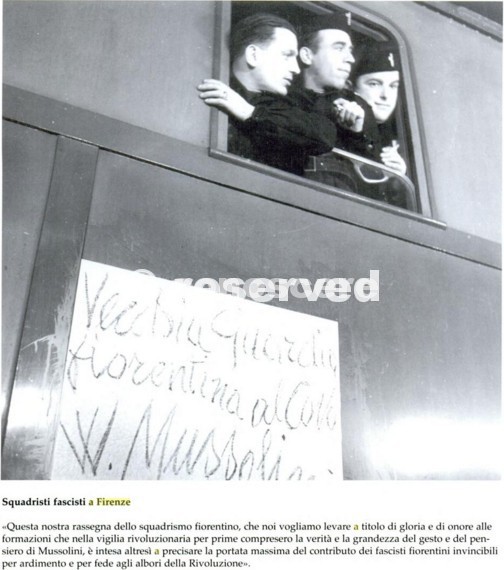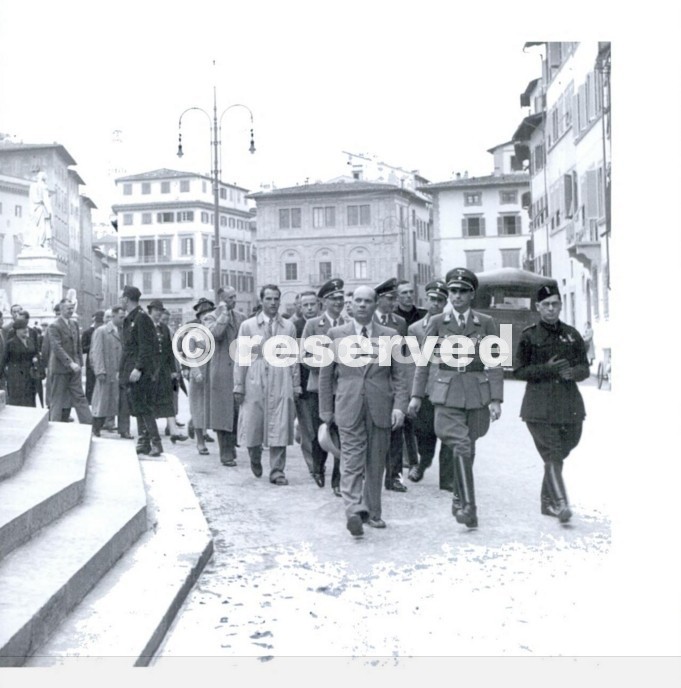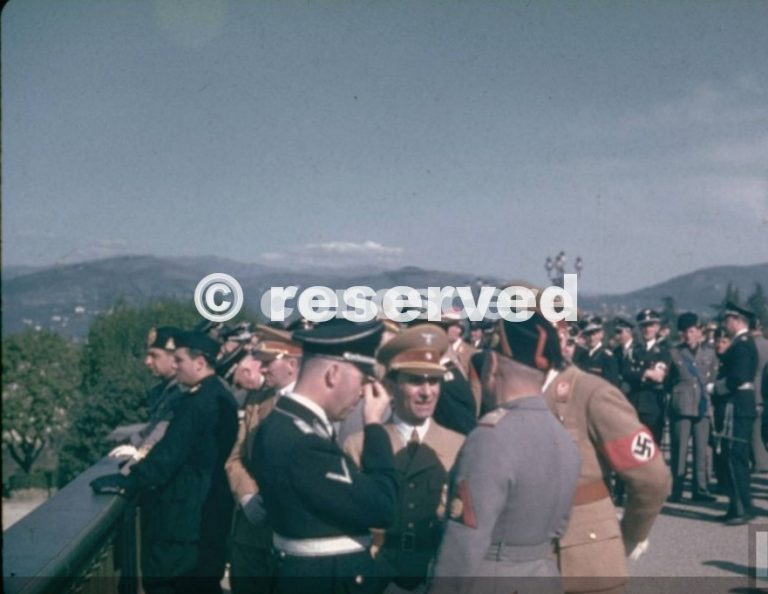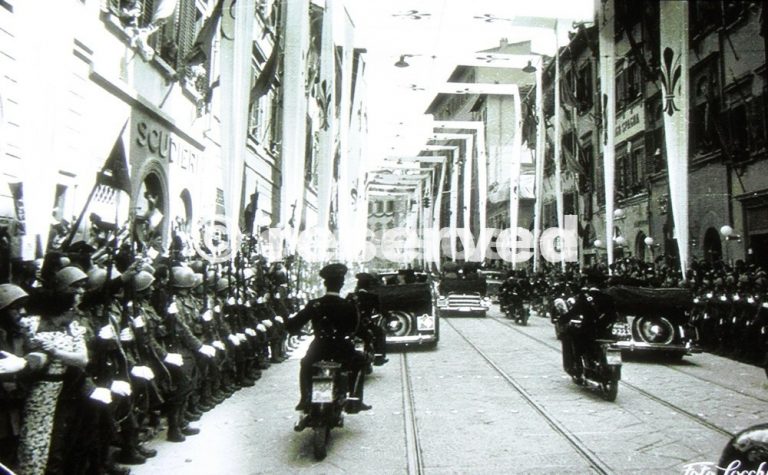FOTO DI HITLER IN PALAZZO VECCHIO A FIRENZE
FOTO DI HITLER IN PALAZZO VECCHIO A FIRENZE
FOTO DI HITLER IN PALAZZO VECCHIO A FIRENZE
ARCHIVIO FOTOGRAFICO HITLER E MUSSOLINI A COLORI FOTO DI HUGO JAEGER PER LIFE MAGAZINE
Source: Lifetime
Copyright : Time Life Pictures
provenienza foto: http://imgur.com/
provenienza foto: http://time.com/tag/hugo-jaeger/
per acquisto foto: http://www.gettyimages.it/
TESTO TRATTO DAL SITO:
http://www.storiadifirenze.org/?p=3286
Il treno di Hitler giunse a Firenze nel primo pomeriggio del nove maggio 1938 proveniente da Roma. Al binario sedici, addobbato con fiori, bandiere, grandi stemmi sabaudi e fasci littori dorati, c’erano ad attenderlo Benito Mussolini, i ministri Ciano, Starace e Bottai, nonché tutte le maggiori autorità cittadine, i gerarchi del regime e una guida ‘turistica’ d’eccezione: Ranuccio Bianchi Bandinelli.
Al momento dell’arrivo, mentre la banda cittadina intonava il Deutschland über alles, la Marcia Reale e Giovinezza, il cielo fu attraversato da una rombante squadriglia di caccia. Fuori da Santa Maria Novella, lungo le vie che sarebbero state percorse dall’automobile scoperta dei due capi di Stato, erano in trepidante attesa trecentocinquantamila persone provenienti da tutte le province della Toscana. La giornata era stata dichiarata festiva in tutta la regione, il tempo era bello, l’organizzazione risultava minuziosa. Sotto l’alto controllo esercitato, da Roma, da Alessandro Pavolini, e a Firenze dal podestà Venerosi Pesciolini, era stata messa in piedi una poderosa macchina propagandistica per realizzare l’evento, predisporre gli allestimenti ed abbellire la città. In Comune era stato creato un apposito ufficio festeggiamenti, mentre decine tra architetti, fotografi e giovani artisti – quasi tutti provenienti dall’Istituto d’Arte – avevano lavorato freneticamente alle scenografie sotto la guida di Giorgio Venturini, allora direttore del Teatro Sperimentale dei Guf di Via Laura. Così, per alcuni mesi la città era stata trasformata in un grande cantiere per via dei rifacimenti di facciate, strade, marciapiedi, spallette dei ponti; l’illuminazione delle strade era stata rinnovata, le vetrine dei negozi tirate a lucido. Al termine il bilancio delle spese fu assai cospicuo e dai 13-15 milioni di lire inizialmente previsti, ne furono sborsati almeno 19, fatto questo che creò al Comune, nei mesi che seguirono, una pesante condizione debitoria. Il centro della città tuttavia risultò profondamente trasformato, gli apparati effimeri avevano creato situazioni scenografiche inusitate con un continuo alternarsi di prospettive nuove, di emergenze monumentali – vere o ricreate in cartapesta – di geometrie alterate, di studiate sonorità e giochi di luci.
Proprio all’uscita della Palazzina Reale era stata realizzata, per esempio, una tribuna a gradoni lunga trecento metri e sormontata da un’alta spalliera verde. Da lì doveva infatti partire il corteo che avrebbe dovuto attraversare tutto il centro cittadino per recarsi a Palazzo Pitti, a Santa Croce, Boboli, Palazzo Vecchio, Palazzo Medici Riccardi e, infine, al Teatro Comunale. Via Panzani era stata decorata secondo il modello della galleria con gli striscioni bianchi con il giglio rosso di Firenze, il simbolo del saluto della città all’ospite. Poi, a seguire, in via dei Cerretani erano stati disposti i simboli della grande Germania hitleriana, mentre quelli delle antiche corporazioni della Repubblica facevano mostra di sé in via Calzaioli, più in là, dalle finestre dei palazzi di via Strozzi erano stati fatti pendere arazzi pregiati e insegne gentilizie. Lungo tutto l’itinerario era un susseguirsi di bandiere, labari, angoli infiorati, fino a giungere a Pitti dove Hitler si fermò per una breve riposo e dal quale ripartì alle 15.30 per dirigersi al sacrario dei martiri di Santa Croce. Da lì le auto del corteo, dopo aver attraversato Ponte alle Grazie, salirono al Piazzale Michelangelo, per entrare poi a Boboli da Porta Romana dove attendevano centinaia di figuranti per la messinscena degli antichi ludi toscani: dal pisano gioco del ponte alla aretina giostra del Saracino, dall’antico gioco del calcio fiorentino, al palio senese. Subito dopo prese avvio un rapido giro nelle gallerie di Palazzo Pitti e, passando attraverso il corridoio vasariano, degli Uffizi. Infine in Palazzo Vecchio si tenne un breve incontro con varie personalità politiche, della cultura e dello spettacolo. Firenze, che era l’ultima tappa di un viaggio che aveva prima toccato Roma (capitale del neoproclamato impero) poi Napoli (proiezione militare italiana nel Mediterraneo), doveva mettere in scena e sottolineare il nesso spirituale e culturale tra Italia e Germania e tra i rispettivi loro regimi. Per questo, in una sala degli Uffizi, erano state poste opere d’arte fatte giungere appositamente dalla Germania assieme ad altre di artisti tedeschi già facenti parte delle collezioni cittadine.
Ma fu soprattutto la visita al sacrario dei martiri di Santa Croce ad essere, da questo punto di vista, il momento più carico di significati. La celebrazione dei martiri della guerra e del fascismo, l’onore tributato qui al sacello di Giovanni Berta, voleva significare che entrambi i movimenti, quello fascista e quello nazista, avevano entrambi posto radici grazie al sacrificio e all’eroismo dei primi loro accoliti e militanti. La tappa a Santa Croce fu però indirettamente significativa anche per un’altra ragione: essa fu l’unico momento in cui i due capi di Stato poterono – per così dire – varcare le soglie di una chiesa, seppure nella sua parte sottostante e non dal portone principale. Il Cardinale Elia dalla Costa, infatti, seguendo in modo convinto le disposizioni di Pio XI che, a Roma, aveva fatto chiudere tutti i luoghi di culto e i musei vaticani ritirandosi a Castel Gandolfo – aveva sbarrato anch’egli tutte le chiese fiorentine e chiuso il suo palazzo vescovile. Privati della scenografia forse più ambita di Santa Maria del Fiore, la vera epifania pubblica dei due capi di Stato – a parte i veloci passaggi in auto – si ebbe solo in piazza Signoria quando era ormai giunta l’ora del tramonto. Qui i due dittatori si mostrarono al pubblico, che si assiepava numeroso, salutando dal balcone di Palazzo Vecchio. Dopo poco ripresero le auto e si diressero a Palazzo Medici Riccardi per la cena di gala, infine, alle nove di sera, si recarono a teatro dove si tenne un concerto in loro onore (musiche del Simon Boccanegra di Verdi eseguite dall’Orchestra Stabile fiorentina diretta da Vittorio Gui) dopo di che la visita volse al termine. Era ormai notte e, nel breve tragitto tra il teatro e la stazione ferroviaria, al margine esterno del parco delle Cascine, furono lanciati fuochi artificiali di saluto. Prima di giungere di nuovo alla stazione le auto passarono un’ultima volta sotto un arco di trionfo disegnato da potenti fasci di luce. Mezzanotte era scoccata da qualche minuto quando il treno di Hitler si mosse alla volta di Berlino. Cinque minuti dopo anche Mussolini salì in vettura per essere ricondotto a Roma.
